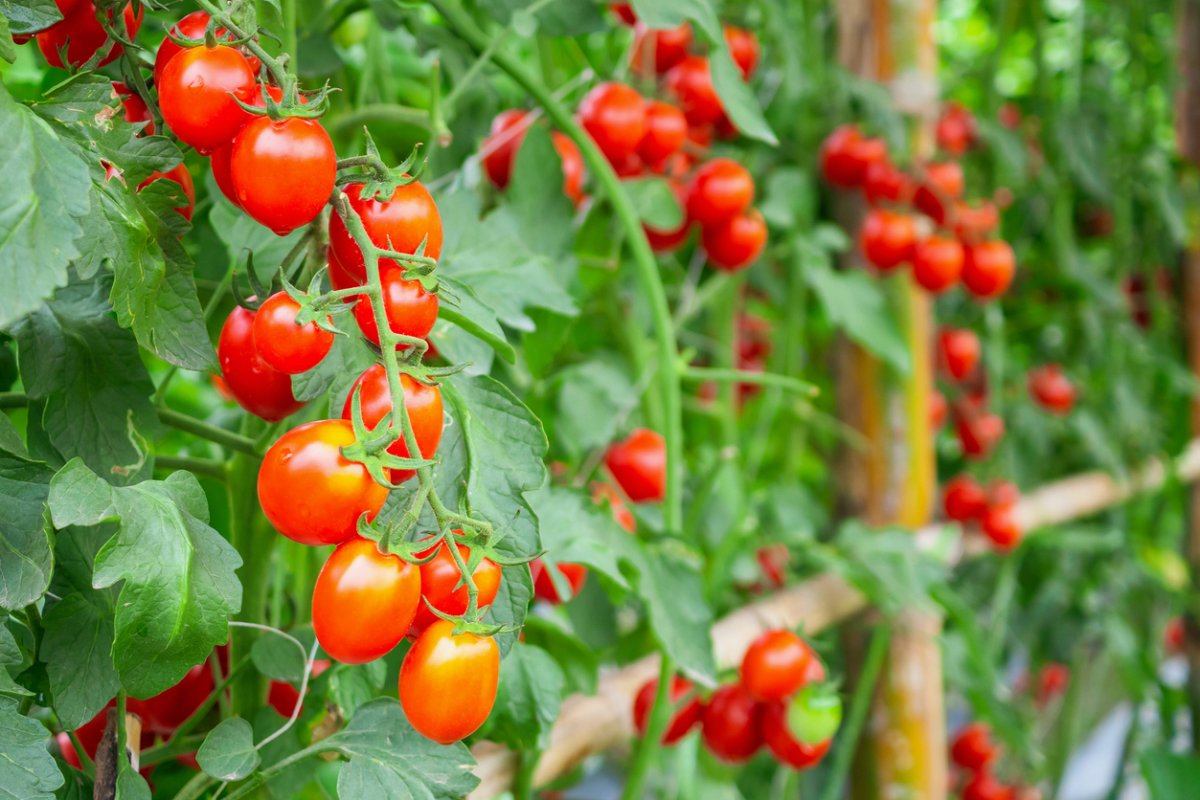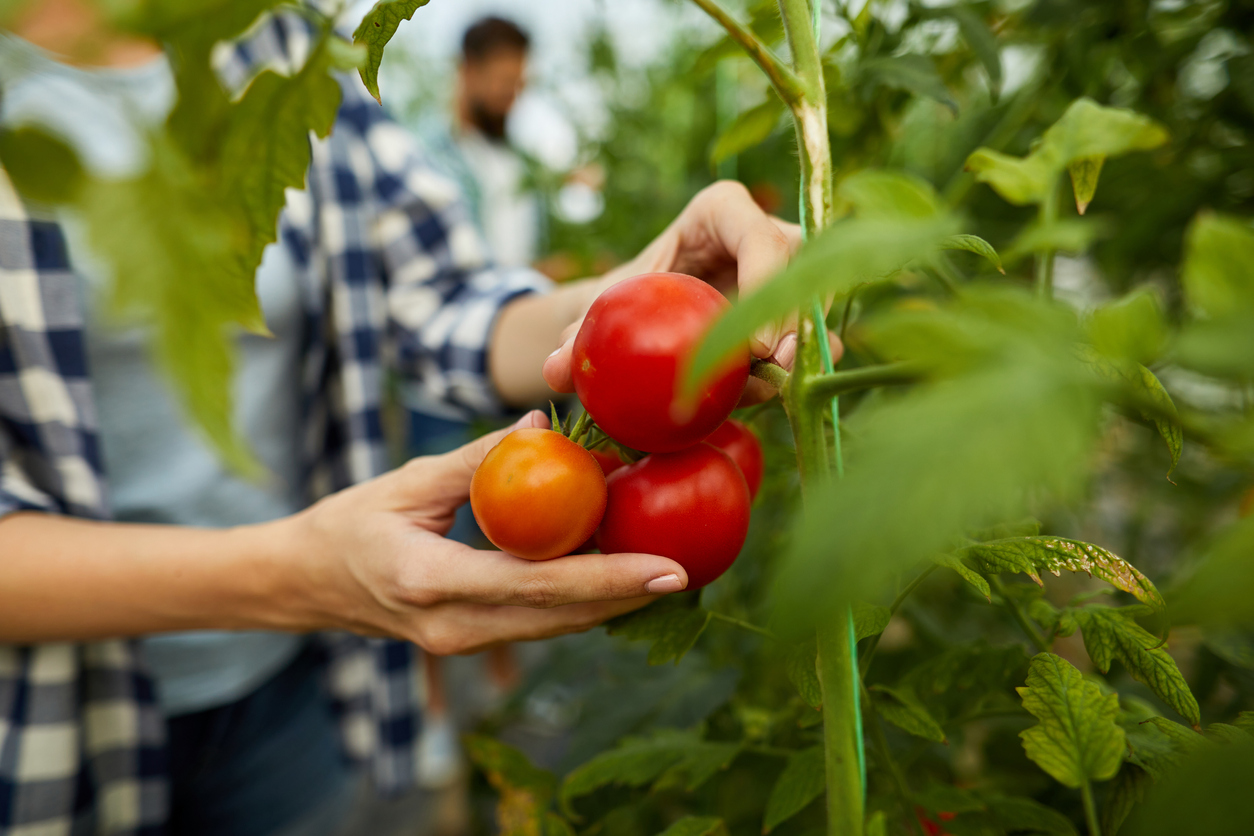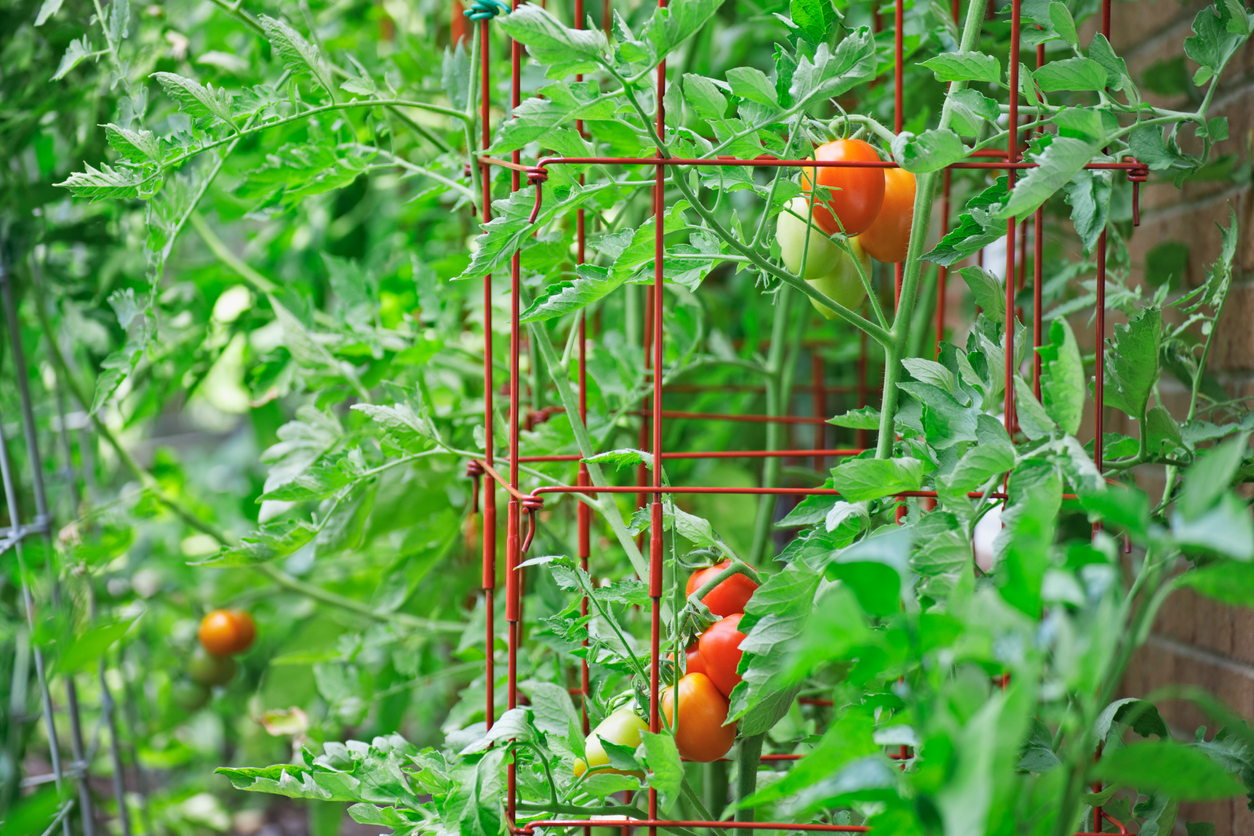

We may earn revenue from the products available on this page and participate in affiliate programs. Learn More ›
Gardeners often have trouble remembering determinate vs. indeterminate tomato differences, but it’s an important distinction that affects how they care for their tomato plants. According to dictionary definitions, “determinate” means “having defined limits,” while “indeterminate” means “not definitely or precisely determined or fixed.”
So, think of determinate tomatoes as disciplined Type A personalities, determined to get their flowering and fruiting over as soon as possible. The easy-going Type B personality indeterminate tomatoes are more indecisive, producing later than determinates and continuing to fruiting in a desultory way until frost kills them. Because of this, indeterminate tomatoes actually can produce more tomatoes than determinate ones—eventually! When it comes down to determinate vs. indeterminate tomatoes, it’s actually a good idea to grow some of both.
Determinate tomatoes grow to a fixed size, whereas indeterminate varieties continue to grow all season.
Also called bush tomatoes, determinate tomato varieties such as Patio and Better Bush usually don’t surpass 4 feet high. Bred to be compact, disease-resistant, and productive, they stop growing once they set terminal buds. They then begin flowering and fruiting prodigiously until all of the blossoms at their tips are “used up,” after which they stop producing. Due to their smaller size, they make the most practical choice for container gardens. This category includes a few heirloom tomatoes, such as Burbank Slicing, Rutgers, and hybrids.
However, most heirloom, open-pollinated tomatoes such as Brandywine and Cherokee Purple are indeterminate types that keep growing in a vining habit until cut down by frost. They typically are less disease-resistant than hybrids, and may reach heights between 6 and 12 feet, with fruits that typically also grow much larger than those of determinate types. Many hybrids are indeterminate too, including Better Boy and Early Girl.
RELATED: The Best Soil for Tomatoes

Indeterminate tomato plants set fruit for a longer period of time than determinate plants.
Determinate types fruit heavily for about a month to 6 weeks before they stop flowering. Therefore, gardeners who want tomatoes mostly to can, freeze, or otherwise preserve should choose determinate tomato seeds or plants, since these bushier tomatoes produce a crop almost all at once. Gardeners who live in mountain climates with short growing seasons might get more fruit from determinate tomatoes.
However, gardeners who prefer a slower but steadier supply of tomatoes they can eat fresh through the growing season should opt for indeterminate tomato plants or seeds. Those that are heirlooms, after all, have a reputation for being the best tasting. And, although indeterminate plants don’t produce as many tomatoes at one time, they can keep them coming for several months, depending on the growing zone.
If you have the room, you should opt for growing both types of tomato plants. That way, once your bushy determinants stop producing, you should still have tomatoes for everyday use and to harvest for indoor ripening before frost hits. The best way to tell if your tomato is determinate or indeterminate is to check the seed or plant company’s website if ordering online or read the back of the seed packet or planting pack.
Semi-determinate tomatoes combine characteristics of both determinate and indeterminate varieties.
There is yet one more type of tomatoes that falls somewhere between the first two. Semi-determinate tomatoes are more compact than their indeterminate cousins, and often are labeled as dwarf varieties. Still, they can produce fruit throughout the season. They also make fewer suckers than indeterminate plants do. This category’s cultivars include Celebrity and Early Goliath.
Cherry and grape tomatoes can belong to any of the three categories, with semi-determinate types including Sapho and Smarty. Although these in-between types have the potential for huge harvests, it’s impossible to predict in advance how many tomatoes any one plant of any kind will make each season.
RELATED: The Best Fertilizers for Tomatoes
Typically, all three types of tomato plants require support as they mature.

Different tomato plants may require different supports. Due to their large size, indeterminate varieties generally should be enclosed in tall tomato cages or attached to trellises to keep them and their often heavy fruits off the ground. Bushier determinate types can get by with just stakes, while semi-determinate types often do well with the Florida Weave. In this method, the gardener places stakes between the plants and strings tomato twine between the stakes at varying levels from the ground.
Indeterminate and some semi-determinate tomatoes can require some pruning of suckers, but determinate types shouldn’t be pruned much if at all. Removing suckers, the tiny branches that appear in the V formed where branches meet the main stem, can help control growth of vining tomato plants and ensure that more energy goes into growth and fruiting on the more solid main branches.
All types of tomatoes will require after-frost planting—preferably deep planting—along with good soil, adequate water, and fertilizer.
